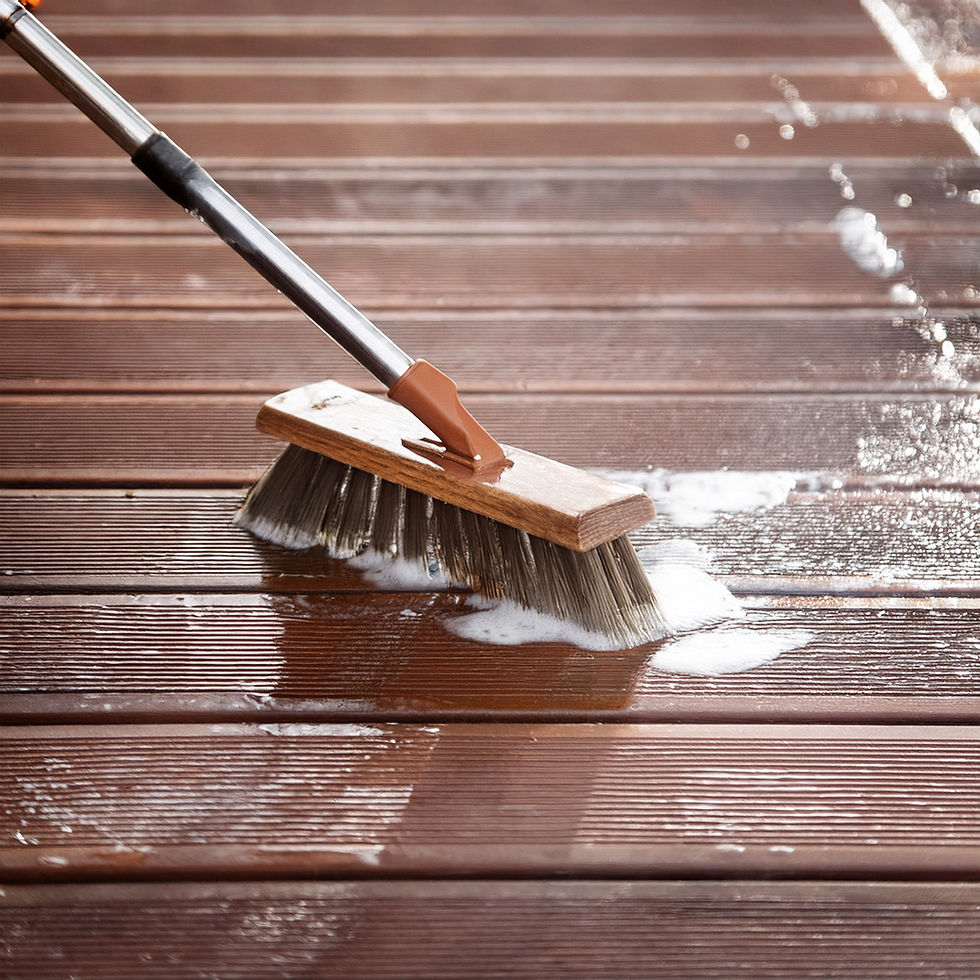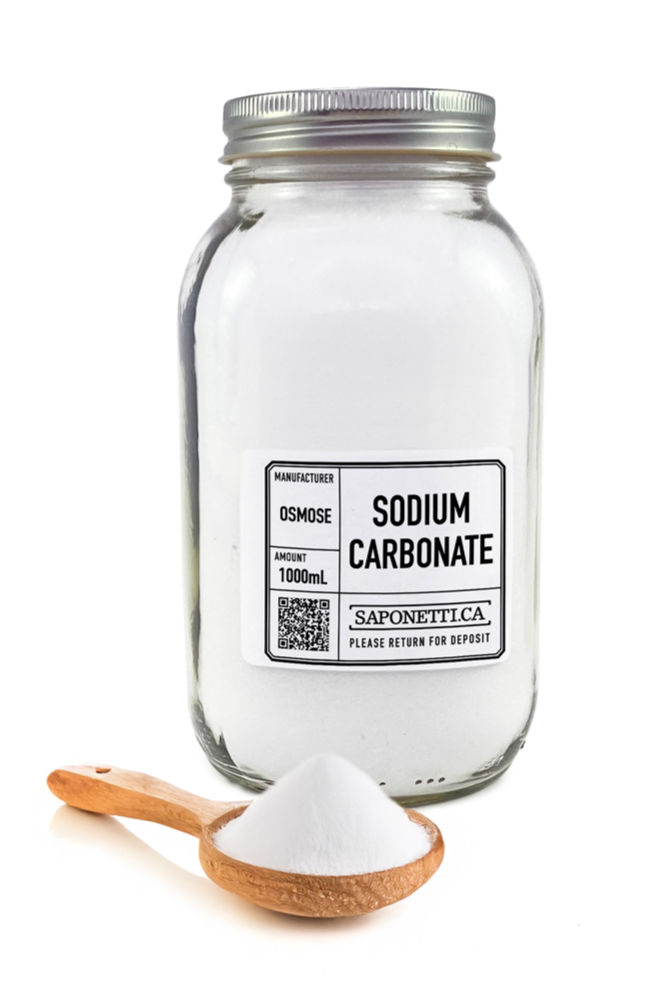Eco-Friendly Washing Soda Uses: A Guide to Minimalist Cleaning
- Nikki Self

- Aug 10
- 6 min read

Understanding Washing Soda a.k.a. Sodium Carbonate:
What It Is and How It Works
Sodium carbonate, also known as washing soda or soda ash, is a versatile alkaline substance commonly used in households and various industries. Chemically represented as Na2CO3, it is a sodium salt of carbonic acid. Its high pH level makes it an effective cleaner, as it can break down dirt, grime, and organic stains with ease.
In laundry applications, sodium carbonate works by softening water, which enhances the effectiveness of detergents. This is particularly beneficial in areas with hard water, where minerals can inhibit the cleaning power of standard detergents. With its ability to bind to minerals, sodium carbonate prevents them from interfering with the cleaning process, leaving your clothes fresher and cleaner.
Top Benefits of Using Sodium Carbonate in Your Laundry Routine
Sodium carbonate is a powerhouse when it comes to laundry care. One of its main benefits is its ability to boost the cleaning power of your detergent. By softening water, it allows detergents to work more effectively, leading to cleaner, brighter clothes. Additionally, sodium carbonate helps to remove tough stains, including grease, oil, and wine, which can be particularly stubborn on fabrics.
Another significant advantage is its deodorizing properties. Sodium carbonate neutralizes odors, making it an excellent choice for laundry loads with sweaty gym clothes or musty towels. Furthermore, it is a naturally occurring, eco-friendly substance, making it a safer alternative to harsh chemical cleaners for both your family and the environment.
How to Use Sodium Carbonate for Optimal Laundry Results

Incorporating sodium carbonate into your laundry routine is simple and straightforward. For a standard load, add about half a cup of sodium carbonate directly into the drum of your washing machine, along with your regular detergent. This will help to boost the detergent's cleaning power and soften the water.
For heavily soiled or particularly stubborn stains, you can create a pre-soak solution by dissolving half a cup of sodium carbonate in a bucket of
warm water. Let the stained garments soak for at least 30 minutes before washing them as usual. This pre-treatment helps to break down the stains, making them easier to remove during the wash cycle.
Comparing Sodium Carbonate with Other Laundry Additives
When compared to other laundry additives, sodium carbonate stands out for its effectiveness and versatility. Unlike bleach, which can weaken fabrics and cause discoloration, sodium carbonate is gentle yet powerful, making it suitable for a wide range of materials. It also outperforms baking soda in terms of stain removal and deodorizing capabilities.
While fabric softeners can leave residues that build up over time, sodium carbonate naturally softens water and enhances detergent performance without leaving any harmful residues. Its eco-friendly nature makes it a more sustainable choice compared to synthetic additives, aligning with a growing preference for environmentally conscious household products.
Beyond Laundry: Other Household Uses of Sodium Carbonate
Sodium carbonate's utility extends far beyond the laundry room. It is an excellent all-purpose cleaner that can be used to tackle a variety of household chores. For instance, it can be used to clean kitchen surfaces, remove grease from stovetops, and even unclog drains when combined with hot water.

In addition, sodium carbonate can be used to clean outdoor spaces. It is effective in scrubbing down patios, removing moss from walkways, and cleaning outdoor furniture. Its versatility and effectiveness make it an indispensable item in any household, providing a natural and safe alternative to chemical-laden cleaners.
Where Does Washing Soda Come From
Washing soda, or sodium carbonate, is produced both naturally and synthetically. One of the largest natural sources is trona ore, a mineral rich in sodium carbonate, mined primarily in Wyoming’s Green River Basin, home to the world’s biggest known deposit. Trona is extracted, crushed, and heated to separate sodium carbonate, which is then purified into the washing soda used in cleaning and manufacturing. In other regions, sodium carbonate is made through the Solvay process, which combines salt (sodium chloride) and limestone (calcium carbonate) with ammonia in a controlled chemical reaction. This method has been widely used since the 19th century and continues to supply much of the global demand for industrial-grade sodium carbonate.
Environmental Safety
While it’s not biodegradable in the traditional sense, being an inorganic salt rather than an organic compound, washing soda naturally dissociates in water and doesn’t persist in soil or bioaccumulate in living organisms. That makes it a cleaner choice than many household cleaning ingredients that can linger and build up in ecosystems. It’s non-toxic and low risk to aquatic life when used in normal household quantities.

However, most commercial washing soda is produced from trona ore, and the extraction process can release methane, a potent greenhouse gas. Like many mined materials, there’s an environmental cost at the source, even if the product itself is relatively benign in use. Because washing soda is highly effective in small doses and works across multiple applications, it can still help reduce overall product use, cutting down on packaging waste and limiting chemical exposure in homes.
Alternatives & Lower-Impact Options
For those who want to avoid the environmental costs of trona mining or large-scale synthetic production, there are a few other routes. Washing soda can be made by simply heating baking soda at home, which converts it into sodium carbonate without the methane emissions from mining, though it does release a small amount of CO₂.
On an industrial scale, sodium carbonate can also be recovered from certain manufacturing waste streams, reducing the need for new raw material extraction. In some applications, you might skip washing soda altogether and use substitutes like citric acid, sodium citrate, or sodium percarbonate, each with its own strengths, depending on the cleaning job.
While none of these options is perfect, they give households and businesses more ways to reduce their footprint without sacrificing cleaning power.

Versatility in Use
Washing soda’s versatility makes it a cornerstone of eco-friendly cleaning routines. Its high alkalinity, water-softening power, and ability to cut grease allow you to streamline the number of products you need at home:
Heavy-Duty Cleaning Agent – Dissolves tough grease and grime on stovetops, ovens, and outdoor furniture. Its high pH helps break down oily residues that ordinary soap can’t handle as easily.
Laundry Booster – Softens hard water and lifts stubborn stains from fabrics by breaking down acidic soils and improving detergent performance. Particularly effective on greasy or protein-based stains.
Odor Neutralizer – Neutralizes acidic odours in garbage cans, drains, and diaper pails by balancing pH levels and chemically reacting with odour molecules.
Dishwashing Aid – Helps remove baked-on food and hard water deposits from dishes when added to dishwasher detergent.
Surface Cleaner – Can be diluted and used to clean tile, grout, and concrete surfaces.

Eco-Friendly Recipes Using Washing Soda
Here are several detailed ways to incorporate washing soda into your cleaning routine while reducing dependence on synthetic chemicals:
Grease-Cutting Kitchen Cleaner
Ingredients:
1 tablespoon washing soda
1 quart warm water
Instructions: Dissolve washing soda in warm water.Use a sponge to wipe down greasy surfaces like stovetops, range hoods, and counters. Rinse with clean water.
How It Works: Washing soda’s strong alkalinity breaks down fats and oils, making them easier to lift and rinse away.
Laundry Booster
Ingredients:
1/2 cup washing soda
Instructions: Add washing soda to your washing machine along with detergent. Wash as usual.
How It Works: Softens water, allowing detergent to clean more effectively and preventing mineral deposits from dulling fabrics.
Heavy-Duty Scouring Paste
Ingredients:
3 parts washing soda
1 part water
Instructions: Mix into a thick paste.Apply with a sponge to stained sinks, grout lines, or oven doors. Rinse thoroughly after scrubbing.
How It Works: The abrasive texture and alkalinity lift stubborn grime and stains without needing harsh chemicals.
Drain Cleaner
Ingredients:
1/2 cup washing soda
Boiling water
Instructions: Pour washing soda directly down the drain.Follow with a kettle of boiling water.
How It Works: Washing soda helps dissolve greasy buildup and deodorizes pipes by saponifying fats and neutralizing acidic residues.
Dishwasher Detergent Booster
Ingredients:
2 tablespoons washing soda
Instructions: Sprinkle washing soda into the bottom of your dishwasher before starting a load.
How It Works: Helps prevent mineral deposits on dishes and enhances the cleaning power of your dishwasher detergent.
These recipes are just a few ways washing soda can help replace multiple synthetic cleaners around your home. Its strong alkalinity and mineral-based composition make it a powerful, lower-toxicity option for a variety of heavy-duty cleaning tasks.
Until next time,
xo Nikki & Christian
Resources:
Arm & Hammer: What is Washing Soda?
National Institutes of Health – PubChem: Sodium Carbonate
The Spruce: What is Washing Soda and How is it Used?
Environmental Working Group (EWG): Sodium Carbonate in Cleaning Products




Comments